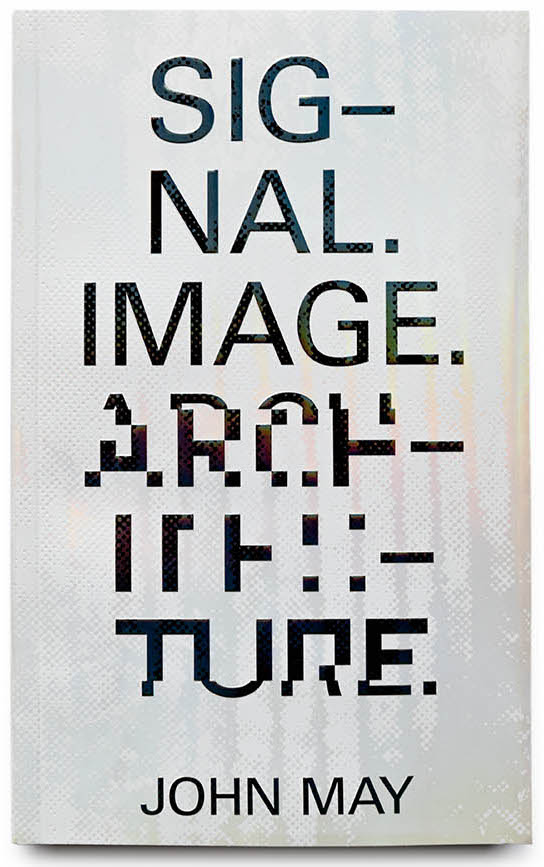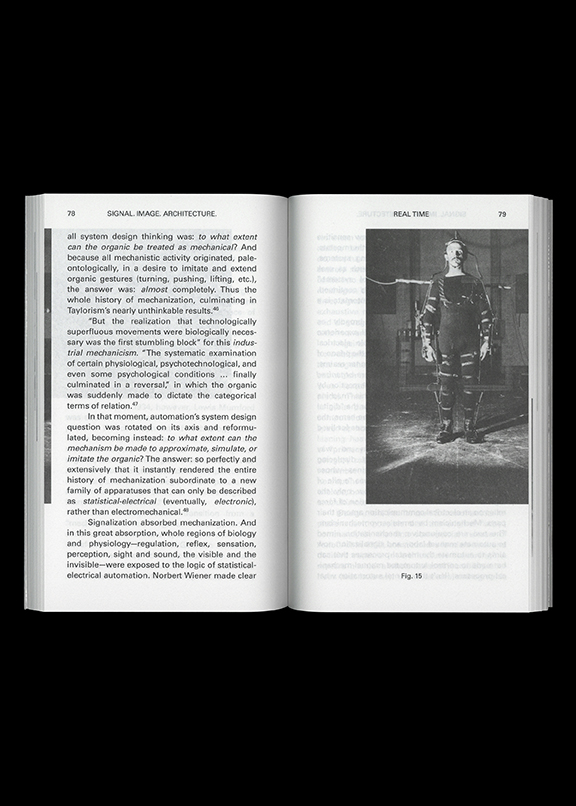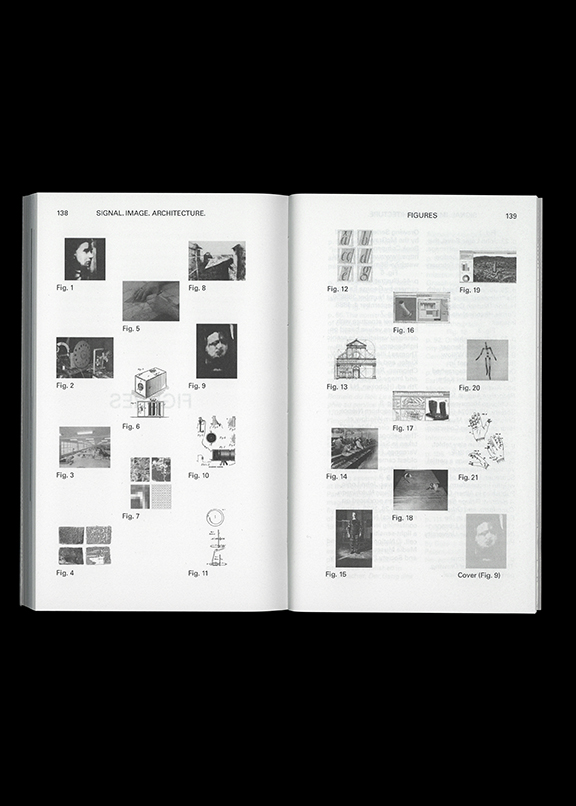 In his new book-length essay, Signal. Image. Architecture. (Columbia Books on Architecture and the City, 2019), John May asserts that a technical succession—from the orthographic to the “postorthographic” (a term May substitutes for “the digital,” which in his view has mostly lost its meaning)—has occurred in recent decades, which has radically altered our consciousness and experience of the world. Yet the field of architecture has for the most part refused to acknowledge this change, too often regarding the technical gestures performed using computers—the “cut” or “Make2D” functions, for example—as simply extensions of those once performed by hand: plans, sections, elevations, etc. The consequences of such self-delusion, he argues, are not just academic or frivolous but rather “give rise to epistemic, political, moral, and ultimately existential concerns.”
In his new book-length essay, Signal. Image. Architecture. (Columbia Books on Architecture and the City, 2019), John May asserts that a technical succession—from the orthographic to the “postorthographic” (a term May substitutes for “the digital,” which in his view has mostly lost its meaning)—has occurred in recent decades, which has radically altered our consciousness and experience of the world. Yet the field of architecture has for the most part refused to acknowledge this change, too often regarding the technical gestures performed using computers—the “cut” or “Make2D” functions, for example—as simply extensions of those once performed by hand: plans, sections, elevations, etc. The consequences of such self-delusion, he argues, are not just academic or frivolous but rather “give rise to epistemic, political, moral, and ultimately existential concerns.”
A meticulous and objective description of the technical underpinnings of drawing, photography, and the image establishes the scope of this paradigm shift. In May’s account, the distinction between these three forms is absolute: drawing, at least in its architectural form, is constituted by “acts of geometric gesturing, always aided by mechanical tools, always in some way mechanized”; photography is a chemical process that is always “a form of heliography,” or “the writing of the sun”; images are “a form of photon detection…a process of detecting energy emitted by an environment and chopping it into discrete, measurable, electrical charges called signals, which are stored, calculated, managed, and manipulated through various statistical methods.”

Unlike drawings or photographs, both of which involve a fixed imprint on an equally stable surface, images are, according to May, “inherently dynamic.” Smartphones are not cameras but “energy detectors,” because “all imaging is, knowingly or not, an act of data processing.” In fact, the very idea of “digital photography” is an oxymoron. Conceiving of images and their production as akin to writing and drawing is either a form of denial, nostalgia, or an unconscious reluctance to comprehend a new form and system of thought.
That all thoughts have as their foundation the technical era in which they are born is one of the axioms that underpins May’s argument. The technical, he argues, must not be brushed aside as inconsequential or merely a mechanism for producing something more vital or substantial, because it is intimately entwined with and constitutive of thought itself.
Furthermore, this fusion between technical gestures and thought produces a notion of time unique to each technical era. Consider orthography, which for thousands of years was our dominant technical form. Orthography’s organized marks—inscribed by hand onto paper, parchment, stone, and other surfaces—contributed to forming an understanding of time as linear because the marks are “structured by rule-bound lines with beginnings and ends.” They also have embedded within them the “act of inheritance”: for any drawing to be legible, each gesture made by the hand is always a reproduction or reiteration of a past gesture. Were it created with a different technique each time, a letter or shape would be illegible. This inheritance in turn looks forward to a future in which that gesture will again be repeated. Put another way, the emergence of the orthographic was coterminous with that of history, culture, and tradition as they have long been understood.

By contrast, the electrical image, rather than being positioned in “historical time,” exists in “real time” which “continuously relates the present to all possible futures at once.” This is driven by computers’ capacity to simultaneously produce multiple permutations of possible outcomes of searches, models, or data sets. And all images are subsets of an infinite series of images; their differences are mere variations in electronic signals which can be changed ad infinitum. In this system, there is neither an inherited past nor the continuation of tradition into the future, but rather a focus on the joys of instantaneous production through invisible, automated gestures that occur at a speed incomprehensible to humans.
But the gain in efficiency is not without sacrifice. May argues that orthographic labor provided the space during which “architecture once ruminated on the possibilities and consequences of its forms of life,” and that this time was also where “concepts such as evidence, objectivity, precedent, and history made their home” and when “historical, ethical, political, ontological, epistemological, [and] metaphysical” questions could be pondered and problematized.
The advent of instantaneous and borderless images seems in many ways like a type of progress. But submitting wholly to this new form, without understanding its technical structure and the temporality it engenders, means we risk losing the opportunity to contemplate and assess what effects those instantaneous actions will have for architecture as a field and, by extension, society itself.
“The longer we refuse to see our work and our screens as belonging to a larger culture of imaging, the longer we continue to confuse images with drawings, the more apolitical we become,” May cautions. He is not without hope for the formation of a new consciousness in this era however, and with it a useful politics originating out of the “mental-deskilling” that has resulted from the ubiquity of automation. Through describing the world as it was and as it is now, May’s work acts as a clarion call to shed the futile delusion that the world has not changed.